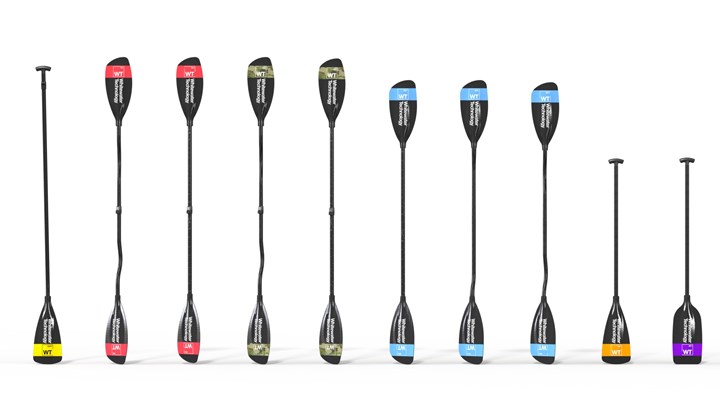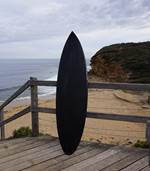Whitewater Technology debuts high-performance, recycled carbon fiber paddle range
Paddles consist of high-impact, non-woven composite that combines 40% recycled carbon fiber with a thermoplastic resin system and an aramid puncture-resistant layer for identical weight, strength and stiffness properties to non-recycled products.

Photo Credit: Whitewater Technology
(WT, Greenville, S.C., U.S.), part of the C12 Technology Group, launched in late October it’s debut paddle range featuring high-performance paddles made with 100% recycled carbon fiber.
The range, which features paddles for all disciplines, was designed by leading advanced materials engineer and whitewater kayaker Ollie Wainwright. Using his composites background in the motorsports industry, WT’s first paddles are the result of two years of intensive R&D into the use of recycled carbon fiber in high-performance outdoor and sporting goods.
“As both a serious paddler and materials engineer I had grown frustrated with the lack of a sustainable high-performance paddle option. We’re out there in nature every weekend using a product that ultimately ends up in landfill... so a few years ago we set out to try and change this,” says Wainwright. He acknowledges that he’s pleased with the results and what the WT has been able to accomplish with the sustainable composites’ design.
WT’s paddles reportedly use a custom-made, high-impact, non-woven composite that combines 40% recycled carbon fiber with a thermoplastic resin system and an aramid puncture-resistant layer. The result is a high-performance paddle with identical weight, strength and stiffness properties to a non-recycled product.
Available initially as a pre-order via the WT website in addition to specialty retailers, the range includes paddles for whitewater, touring, fishing, SUP, rafting and canoe with a variety of adjustable length and shaped shafts.
Pre-sale pricing starts at $240 including free shipping, five-year warranty and crash replacement.
Related Content
-
Composites end markets: New space (2025)
Composite materials — with their unmatched strength-to-weight ratio, durability in extreme environments and design versatility — are at the heart of innovations in satellites, propulsion systems and lunar exploration vehicles, propelling the space economy toward a $1.8 trillion future.
-
Prepreg compression molding supports higher-rate propeller manufacturing
To meet increasing UAV market demands, Mejzlik Propellers has added a higher-rate compression molding line to its custom CFRP propeller capabilities.
-
Filament winding increases access to high-performance composite prostheses
Steptics industrializes production of CFRP prostheses, enabling hundreds of parts/day and 50% lower cost.






